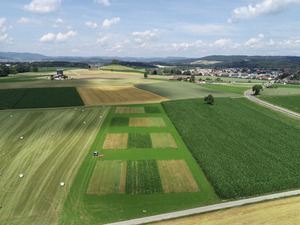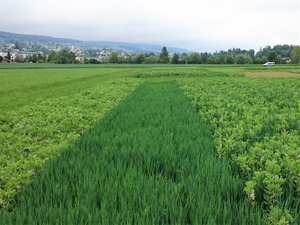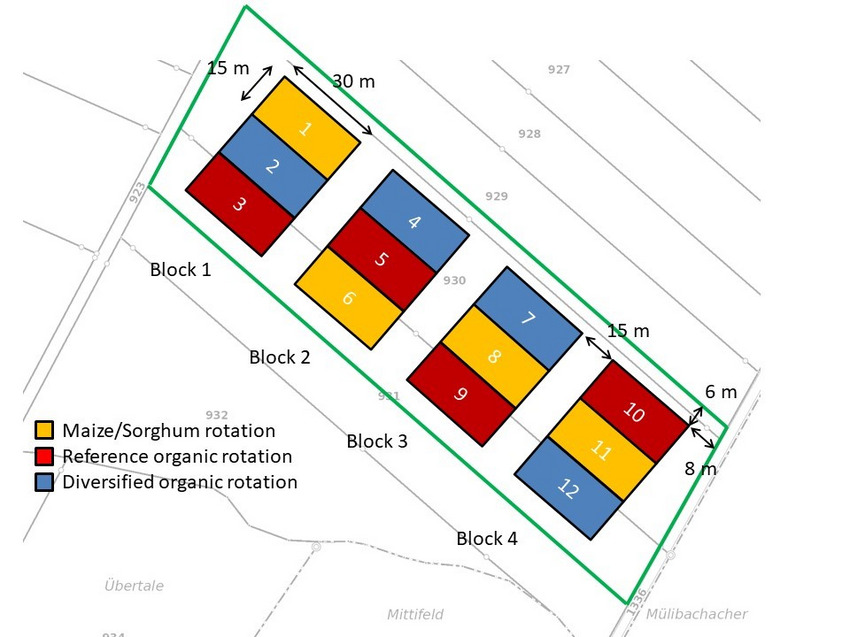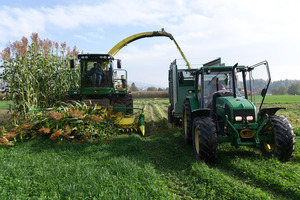Extending an organic rotation with intercropping of forage crops
Field experiment 8, Switzerland


Trial location and duration
Location: Fislisbach, Switzerland (47°42’77’’, 8°29’05’’, 423 m a.s.l.)
Trial duration: 2018-2021
Objectives and research question
Intercropping with legumes is of interest in terms of reduced fertiliser input, better weed suppression and yield stability. We hypothesized that above- and belowground resources are more efficiently used resulting in higher overall yields with a good quality. We also hypothesized that spatial and temporal diversification creates a more attractive habitat for above- and belowground organisms.
Experimental design
The trial has four replications in a randomized block design with plots of the size 15x30 m (Figure 1). The three treatments are a Reference organic rotation (REF1), a diversified organic rotation with intercropping (DIV) and a maize/sorghum rotation (REF2). The crop rotation is shown in Table 1.


Main findings and highlights
- Intercrops produced more yield per ha than single crops
- Legumes in intercropped plots increased biological N fixation compared with single legumes
- Intercrops were more resilient regarding diseases and lodging
- Soil organic carbon levels did not change after four years
- Earthworms in the diversified rotation had more offspring than in the organic rotation and both more than under short rotation
Main challenges
- European corn borer forced to change from maize monoculture to maize/sorghum rotation
- Unfavourable weather conditions caused non-emergence of undersown cover crop in 2019 and lodging of faba bean in 2020

 toccare e scorrere fino al comando Aggiungi alla schermata iniziale.
toccare e scorrere fino al comando Aggiungi alla schermata iniziale.